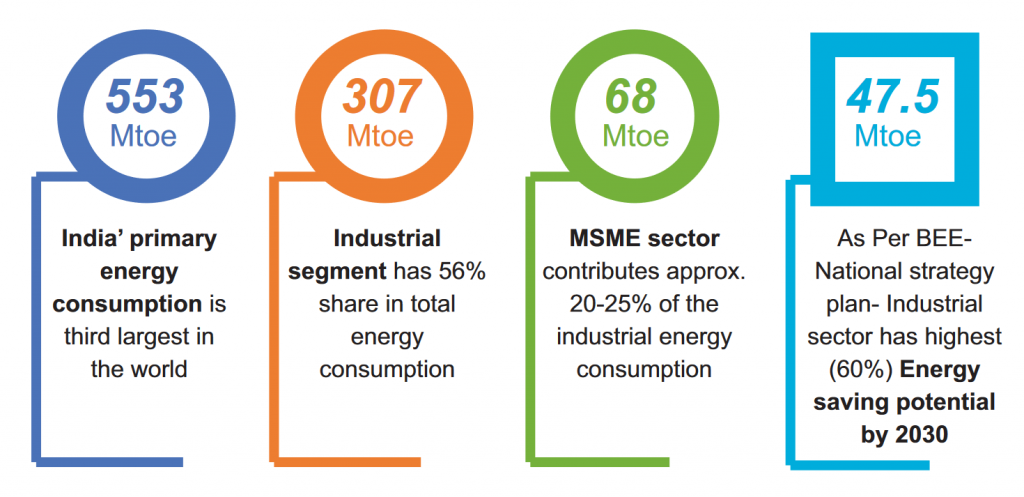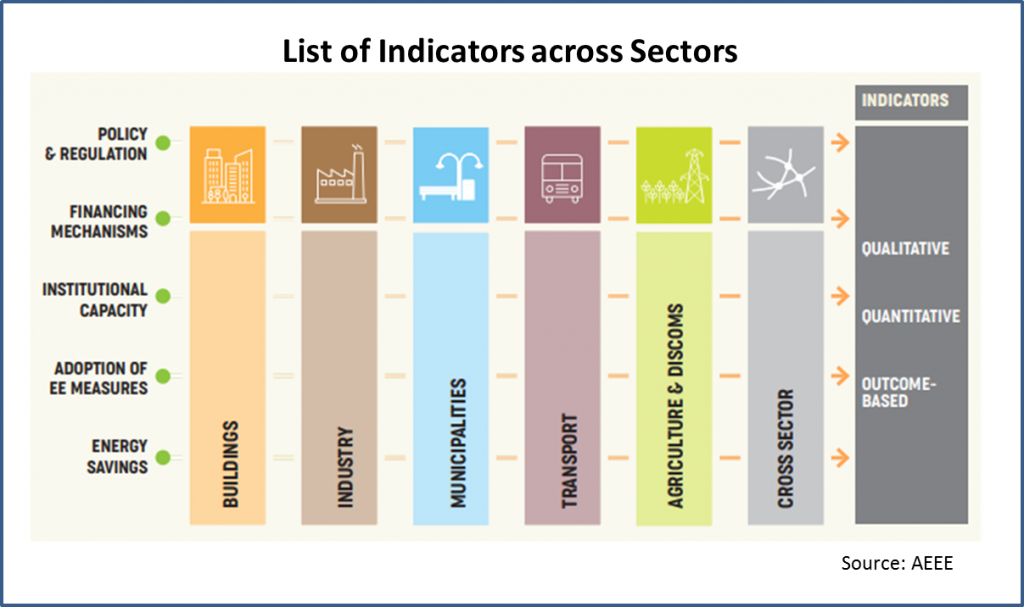
If we go back in time, people didn’t have any appliances or any fancy transportation where energy is concerned. In fact, not so long ago in India our ancestors relied on animals, farming and basic tools to carry out basic tasks. Fast-forward a few years and stunning advancements in technology were being made. Soon enough people were able to use trains, cars and other important inventions.
That said, these vehicles didn’t consume the high levels of energy they do now. We’re living during a time when innovation is gaining more and more traction. People started investing in appliances for their home without taking into consideration the energy levels it consumes. Eventually, we kept wanting the next best thing every year. We’re talking fancy equipment, tools, cards, scooters and so on.
So, what’s the point of all this? Whilst innovation is important, some people don’t realise that this can be harmful for the environment and our quality of life. The aim here is to preserve the planet for future generations. As you know, wasting energy without thinking about the consequences will eventually have its repercussions.
Bearing this in mind, this case study will outline India’s energy situation. We will go into detail on the progress made towards a more energy-efficient country, and we will also discuss what can be done to improve the situation. In this regard, we will be talking a number of sectors, in particular households, transportation, buildings and the entertainment industry.
⚡ Table of Contents ⚡
India’s Energy Situation
Throughout the recent years, India has made significant progress when it comes to energy efficiency. The Government of India – Prime Minister Shri Narendra Modi and his ministers, have been introducing reforms that have helped the country move towards a more sustainable energy efficient system. All this has contributed to an outstanding economic growth in India.

On top of that, the Ministry of Power has made further achievements to ensure that electricity can be accessed by more than 700 million people. This includes electricity production and infrastructure development, including generation, transmission, and delivery, as well as maintenance projects.
More so, India has made huge strides in the deployment of renewable energy, in particular solar energy. Through various programmes such as the replacing of incandescent LED light bulbs, energy efficiency in India enjoyed a further boost.
Although the investments in the energy sector helped the Indian government contributed to the India’s economic growth, this has benefitted those suffering with ongoing health problems. In fact, the Indian government has also addressed the impact of air pollution in big cities. In this regard, 80 million households were given liquefied petroleum gas (under the Pradhan Mantri Ujjwala Yojana scheme), thus reducing the exposure from cooking stoves. In the long run, this reduces the risk of respiratory diseases.
Major Indian Energy Efficiency Reforms
Over the last few years, India has also introduced energy efficiency reforms in coal, oil, gas and electricity. Needless to say, all this is a step in the right direction towards maintaining energy efficiency in India.
The government is taking the necessary measures to put India’s energy market on the map, by firstly improving its economy. More so, the Indian government is also working hard to enhance its energy security by moving towards domestic production via India’s Hydrocarbon Exploration and Licensing Policy (HELP) – one of the country’s most important reforms. Besides further contributing to energy efficiency in India, this will help India set up oil emergency stocks in a strategic petroleum reserve.

In short, India is really making progress in this regard. In fact, the government is also adhering to energy standards as outlined by The International Energy Agency. Given that the IEA is at the forefront of global dialogue on energy efficiency, its authoritative analysis, data, policy recommendations and effective solutions to help countries offer secure and sustainable energy for all.
Energy Consumption by Sector in India
In the next few sections of this case study on energy efficiency in India, we’re going to take a closer look at how the Indian government tackles the consumption of energy sector by sector. We’ll be outlining the ways these different sectors utilise electricity and what can be done to lower the consumption. Adding to that, we will also discuss possible ways in which smarter decisions can be taken in terms of generating power and preserving its efficiency.
Energy Efficiency in Transportation
It goes without saying that all of us rely on transportation to get our groceries, travel and to just get around in general. India is no exception; that said the Indian government needs to ensure that efficiency is the number one priority.
So, let’s take a closer look at the situation. Generally speaking, some cards are imported from other countries. Of course, these cars tend to consume more energy that ones that have recently been imported. More so, they also contribute to air pollution. At the end of the day, one must keep in mind that energy efficiency is the end goal, so something has to be done in this regard.
India is heavily congested with vehicles as it is, so the government needs to take the necessary measures to ensure that transport management is carried out as efficiently as possible. In fact, energy consumption for transport has doubled in the last ten years and also tripled in 2000. By 2017, the total transport energy demand in India exceeded 95 Mtoe. Furthermore, oil products provided 95% of total energy in the sector – in this case, diesel and gasoline.
Additionally, road transport amounted to 90% of total energy demand in domestic transport, along with rail and domestic aviation. In this case, around 3.4 million light duty vehicles (LDVs) were sold in 2917. As far as on-road stock goes, the amount was 35.6 million. This shows there were around 30 LDVs per 1,000 residents.
India is also known for its scooters and motorcycles. In fact, sales exceed the 19 million mark per year. Back in 2018, electric scooters doubled to 54,800, when compared to 2017. Estimates suggest that they make up 98% of India’s sales in electric vehicles.
Although the government needs to monitor the situation closely, you also need to do the groundwork here.. You need to ask yourself if you’re using the right transportation – in other words, you need to evaluate whether the type of vehicle you have is line with the measures being taken with regard to energy efficiency in India.
Some questions include the following:
- Is your vehicle using the right fuel?
- Is your vehicle causing pollution?
So, what can the Indian government do to encourage energy efficiency? For starters, lawmakers should ban vehicles that do not meet the minimum energy performance standard. Furthermore, the government should encourage people to opt for smarter solutions. In this case, non-motorized vehicles would serve as a great alternative. What’s more is that decisions can be made on the incorporation of vehicles that use renewable sources of energy.
Of course, there are other great points that can be brought forward, however, this is already a great step in the right direction. In the long run, this will most definitely contribute to further energy efficiency in India.
Energy Efficiency at Home
Did you ever stop and think how much energy you consume at home? More often than not, this is something that is overlooked since we spend a lot of time in our home. That said, this sector consumes more energy than some of the others we will be talking about in the next sections.
Think about it – you cook, you switch on lights, you use appliances. All of these factors use up a lot of electricity. If we look at some figures, the residential sector accounts for almost 30% of energy TFC in India.
This is mainly coming from traditional use of bioenergy – at 68% of the sector’s total estimates. That said, the share consumed by oil and electricity is also a contributing factor. Throughout the years 2012 and 2017, electricity in homes increased by 54% and oil consumption by 17%. On the contrary, bioenergy and waste declined by 14%.
Needless to say, there’s a huge demand here in electricity demand growth. According to the figures mentioned above, over half a billion people were given access to electricity since 2000. Residents who have higher budgets have purchased more appliances; in this case, 40% of India’s residential homes have a refrigerator. This is significant due to the fact that only 25% of the Indian population had one back in 2010.
More so, more people are interested in cooling system, thus increasing the electricity demand once more. Nowadays, the number of Indian households that own an air-conditioner has increased to 50% throughout the last five years.
Entertainment and Sports
Have you ever wondered how much energy is consumed in entertainment and sports stadiums in India? If you didn’t, you’re about to find out. To help you understand the science behind this, we’re going to refer land-based casinos and cricket. Needless to say, both examples play a huge role in all this. the following will focus on how energy efficiency in India can be increased within brick-and-mortar venues and stadiums.
Casinos in India
Land-based casinos fall under the entertainment industry. Needless to say, this is a phenomenon that has not only dominated India, but also the rest of the globe. What’s interesting about the entertainment industry is that sometimes we forget that its massive. In fact, it’s been revolutionising the world for a number of years. You know what that means, right? The demands for energy and electricity continue to increase year by year. We’re going to illustrate this by using land-based casinos as an example.
As you know, casino venues operate on electricity. What you need to understand is that it cannot be interrupted at any point. Of course, the neglect towards energy efficiency in this industry is a problem.
Think about it – most casinos open by noon and keep their doors open till the early hours of the next day. Just by doing some quick calculations, you’ll realise that the average casino consumes energy for over 12 hours. You need lights, slot machines, music, computers and so on. On top of that, if the casino in question also has a restaurant and a bar, you also have to consider that both of these consume large amounts of energy throughout the food preparation process.
Needless to say, casinos aren’t adhering to energy efficiency here; if anything, they are proving to be a massive problem. So, what can be done to help curb the use of electricity?
A good way to go about this is to encourage owners to opt for off grid or other forms of energy. In the long run, this will actually be beneficial to the casino. Given that venues need a constant supply of electricity, owners can maintain better control of the total power supply. The good news is that most casinos around the world already have backup generators. On top of that, owners should invest in casino equipment that contributes to more energy efficiency.
Although we’ve mainly talked about land-based casinos, online casinos can also do their part by being more considerate of the power management used in this scenario. When compared to land-based casinos, online ones don’t have to open multiple venues. A warehouse or headquarters that has all the equipment needed to help registered players is enough.
Cricket in India
Cricket stadiums in India consume a large amount of energy. Think about it – lights and big screens are everywhere due to the size of the cricket pitch. Needless to say, these elements use up high amounts of electricity every time a cricket match is held in a stadium.
Let’s take a closer look at the situation in India; cricket venues face hefty bills considering the fact that there are around 8 lighting towards in each venue. In this regard, the electricity consumed is around 11 kilovolts. It goes without saying that something needs to be done to minimise this massive energy supply. For example, a transformer can reduce the total amount to 1800 Kilowatts.
Given that cricket is extremely popular in India, other games are also contributing to a high consumption of energy. If we look at some figures, more than 620,000kWh over a period of 12 months.
That said, things are not all bad given that stadiums are powered by generators. In total the carbon footprint is 3% of the country’s carbon source. Had organisers used electricity right off the direct grid, the country would face even bigger problems in terms of energy efficiency. More can be read on energy saving schemes being implemented in Cricket Stadiums in India in our study on Energy Efficiency in Sports Stadiums.
Construction in India
It is good to see that India is contributing to the energy efficiency of building through mandatory building energy codes, voluntary rating schemes, policies and programmes. In this regard, the Bureau of Energy Efficiency (BEE) introduced energy building codes in India back in 2017. These codes are useful because they outline energy performance standards.
This includes requirements for buildings. Architects and designers must include design principles and renewable energy sources that contribute to further energy efficiency in India. To put this into context, any new buildings in the country must adhere to the codes that have been enforced to implement the minimum energy savings of 25%. Buildings that have energy savings that exceed 35% get ECBC Plus status and ones that achieve 50% get Super ECBC status. In this regard, compliance falls under three categories: prescriptive, trade-off and whole building performance method.
Furthermore, it is important to note that India took an important step with the first ECBC for residential households. In this case, some enforcement has been implemented to regulated energy efficiency in each building, but it also improved thermal comfort and passive systems.
On top of that, the 2017 National Energy Efficient Buildings programme has contributed to optimise 20,000 large public and private buildings with more powerful appliances and equipment. In fact, this led to rewarding results in 2020.
Conclusion: India is making good progress
Throughout this case study, we’ve touched on how energy efficiency in India is carried out. Whilst there still a lot of work to be done, it’s good to see that the country has made and is till making progress towards a more sustainable way of living.
What does the future hold in terms of maintaining great energy efficiency levels? Only time will tell, but we’re hoping that people realise what’s important here. Energy management is something we have to consider on a daily basis.
Just by being a little more careful on how we use appliances or vehicles and so on, we can all have a better life. In the end, the goal isn’t to reduce costs, rather to maintain a better quality of life for generations to come.

India Case Study Sources
Information on the impact of energy efficiency measures: beeindia.gov.in
Information on India’s energy policies: iea.org
Information on entertainment venues in India: casinos-india.in
